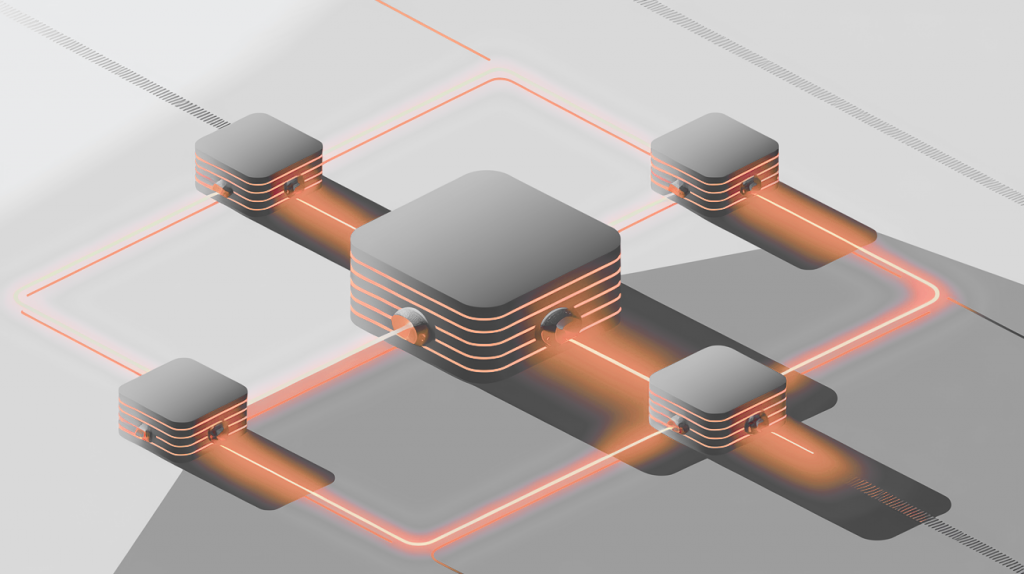Enterprise software deployments can go sideways fast. The budget gets approved, the vendor gets selected, and the deployment kicks off with high hopes. Then months pass with endless configuration sessions, user complaints, and integration headaches. Eventually, the project gets “deprioritized” while the original problems remain unsolved.
This pattern happens across all kinds of enterprise software, but it’s particularly costly when it affects Privileged Access Management (PAM) solutions. While a troubled CRM deployment might hurt productivity, a stalled PAM implementation leaves you exposed to the threats you set out to prevent. With nearly 40% of breaches involving privileged accounts, getting PAM right matters more than most software decisions.
So what separates PAM deployments that succeed from those that become expensive shelf-ware? Let’s dig into the common failure points and how to avoid them.
The Complexity Trap: When Security Becomes Its Own Enemy
The biggest killer of PAM projects isn’t malicious hackers or budget cuts… it’s complexity. When your security solution requires a PhD to operate, something’s gone wrong.
Traditional PAM solutions can sometimes feel like they were designed by engineers for engineers, with little thought given to the people who have to use them daily. These systems might require:
- Extensive on-premises infrastructure (servers, databases, appliances)
- Complex integration with existing systems via custom APIs
- Specialized training for both administrators and end users
- Months of configuration and fine-tuning
The result? IT teams get overwhelmed, users revolt, and the project gets shelved “until we have more resources.” Spoiler alert: those resources never materialize.

User Resistance: The Human Factor
Even when IT teams power through the technical complexity, they often hit another wall: user resistance.
This resistance isn’t just plain old stubbornness. They’ve had permanent admin rights for years, yet now they suddenly find themselves having to justify every elevation request. Tasks that used to take seconds now require approval workflows. From their perspective, PAM feels like a productivity killer disguised as a security improvement.
The problem gets worse when the PAM solution has a clunky interface or slow approval processes. Users start looking for workarounds, defeating the entire purpose of implementing PAM in the first place. If your security solution encourages people to bypass security, you’ve missed the mark.
The Integration Nightmare
Legacy systems create another major failure point for PAM deployments. Most organizations have a mix of old and new systems that don’t play nicely together, but many traditional solutions make integration a nightmare.
The typical scenario goes like this: You buy a PAM solution that promises to work with everything. Then you discover it requires custom API development to connect with your ERP system, doesn’t support your Linux servers properly, and can’t handle your cloud applications without additional modules (sold separately, of course).
Months pass as your team tries to force square pegs into round holes. Eventually, someone suggests postponing the rollout until “after the next infrastructure upgrade.” The PAM project joins the graveyard of good intentions.
Strategy Vacuum: Rolling Out Without a Plan
Organizations often begin deploying a PAM solution without fully understanding their privileged access needs. This lack of planning creates a cascade of problems that doom the project from the start.
Without a clear strategy, teams make critical mistakes like:
- Failing to identify all privileged accounts before deployment
- Not understanding which applications actually need elevation
- Skipping the discovery phase that reveals how users currently work
- Implementing restrictive policies without considering business impact
The result is a PAM solution that feels like it was designed in a vacuum, with little connection to how work actually gets done. Users find their daily tasks blocked, IT gets overwhelmed with exception requests, and leadership starts questioning whether PAM is worth the hassle.
The Vendor Problem: One Size Fits None
Many PAM vendors have built solutions for enterprises with unlimited budgets and dedicated security teams. These platforms offer every feature imaginable, including some you’ve never heard of. Sounds great, right?
Wrong, if you’re a mid-size organization that just needs to remove admin rights without breaking everything. Many organizations believe their existing tools are sufficient, partly because traditional PAM solutions feel like overkill.
The feature bloat problem manifests in several ways:
- Overwhelming interfaces that require extensive training
- Expensive licensing based on features you’ll never use
- Resource requirements that strain smaller IT teams
- Maintenance overhead that consumes more time than the solution saves
When your PAM solution requires a full-time administrator just to keep it running, you’ve traded one problem for another.
What Success Actually Looks Like
Despite the challenges, many organizations do succeed with PAM. The difference comes down to approach. Successful PAM implementations share several common characteristics:
Simplicity by Design
The best PAM solutions feel familiar to users (or better yet, are barely noticed in the first place). Instead of forcing people to learn entirely new workflows, they integrate naturally with existing processes. Take our Endpoint Privilege Management product, for example.
When users want to install a new app, they get a simple elevation request popup where they can provide a brief justification before the request goes to IT for approval. Instead of having to manually create support tickets or send emails, the approval process is streamlined and can happen in minutes through our mobile app or web portal.
Even better, our machine learning and AI approval features mean that commonly used, trusted applications get automatically approved without any user interaction at all – the system learns what’s safe and handles it seamlessly in the background.
Cloud-First Architecture
Successful deployments often use cloud-based PAM solutions that eliminate infrastructure headaches. Instead of buying servers and configuring databases, IT teams can focus on policies and user experience.
Cloud solutions also tend to have better integration capabilities. Modern APIs and pre-built connectors handle the heavy lifting of connecting with existing systems. What used to require custom development now works with a few configuration clicks.
Admin By Request’s PAM solutions require zero on-premises infrastructure and integrate with tools your team already uses like ServiceNow, Teams, Slack, and Azure AD. Approval workflows happen within familiar platforms instead of forcing people to learn new systems.
Phased Rollouts with Quick Wins
Rather than trying to solve everything at once, successful organizations start small and build momentum. They might begin with IT staff who understand the security benefits, then expand to other departments once the system proves its worth.
This approach lets teams refine their policies based on real usage patterns rather than theoretical requirements. It also gives users time to adapt gradually instead of facing a dramatic change overnight.
ADVA Optical Networking took exactly this approach when they deployed our solution across 2,500 endpoints. They started with their entire IT department, then rolled out location by location over six months. This phased approach allowed them to test configurations and build confidence before each new phase, achieving full adoption with no decrease in productivity.

Making the Right Choice for Your Organization
Understanding what makes PAM deployments succeed is only half the battle. The other half is evaluating vendors and making smart purchasing decisions that set you up for success.
Start with a Pilot, Not a Purchase
The biggest mistake organizations make is committing to enterprise-wide deployments before proving the solution works in their environment. Smart buyers start small and test thoroughly.
Look for vendors that offer meaningful trial periods or free tiers. You need time to see how the solution handles your specific applications, integrates with your existing tools, and responds to real user workflows. A 30-day trial with full functionality beats a flashy demo every time.
Admin By Request offers a free plan for up to 25 endpoints with no time limits. This lets you deploy both our Endpoint Privilege Management and Secure Remote Access solutions, train your team, and prove value before spending a dollar.
Question Everything During Demos
Vendor demos are valuable for understanding how solutions work, but they’re designed to showcase best-case scenarios. Your job is to dig into the messy realities of your environment.
Ask hard questions: What happens when your VPN goes down? How does the solution handle that legacy application your accounting team can’t live without? Can you see actual deployment timelines from similar organizations, not theoretical estimates?
Pay attention to what the vendor struggles to answer. Hesitation around integration complexity or vague responses about deployment timelines are red flags.
Calculate the Real Total Cost
PAM vendors love to quote attractive per-user licensing costs, then hit you with expensive add-ons during implementation. Professional services, additional modules, premium support contracts, and integration fees can double your actual costs.
Some vendors will charge clients setup costs and enforce a minimum number of service hours per month. These hidden fees add up quickly and signal that the solution isn’t as straightforward as promised.
Admin By Request doesn’t do this. Everything is so simple we handle all setup before the sale, and we don’t enforce minimum service hours.
The Bottom Line
PAM deployment failures happen when organizations choose overly complex solutions that prioritize features over usability. Organizations succeed when they focus on simplicity, user experience, and gradual implementation rather than trying to solve every problem at once.
The stakes are too high to get this wrong. With privilege-related breaches being so common, effective privilege management isn’t optional. But “effective” doesn’t mean “complicated.”
The best PAM solution is the one that actually gets deployed, adopted by users, and delivers measurable security improvements. Everything else is just expensive shelf-ware that leaves you vulnerable to the very threats you set out to prevent.
Ready to give it a try? Book a demo, request a quote, or download our free plan on this page.







